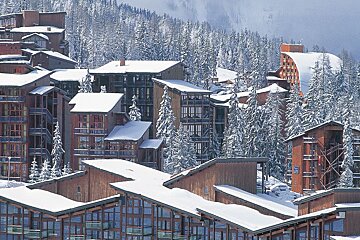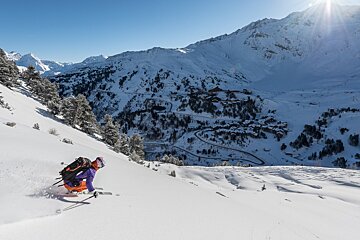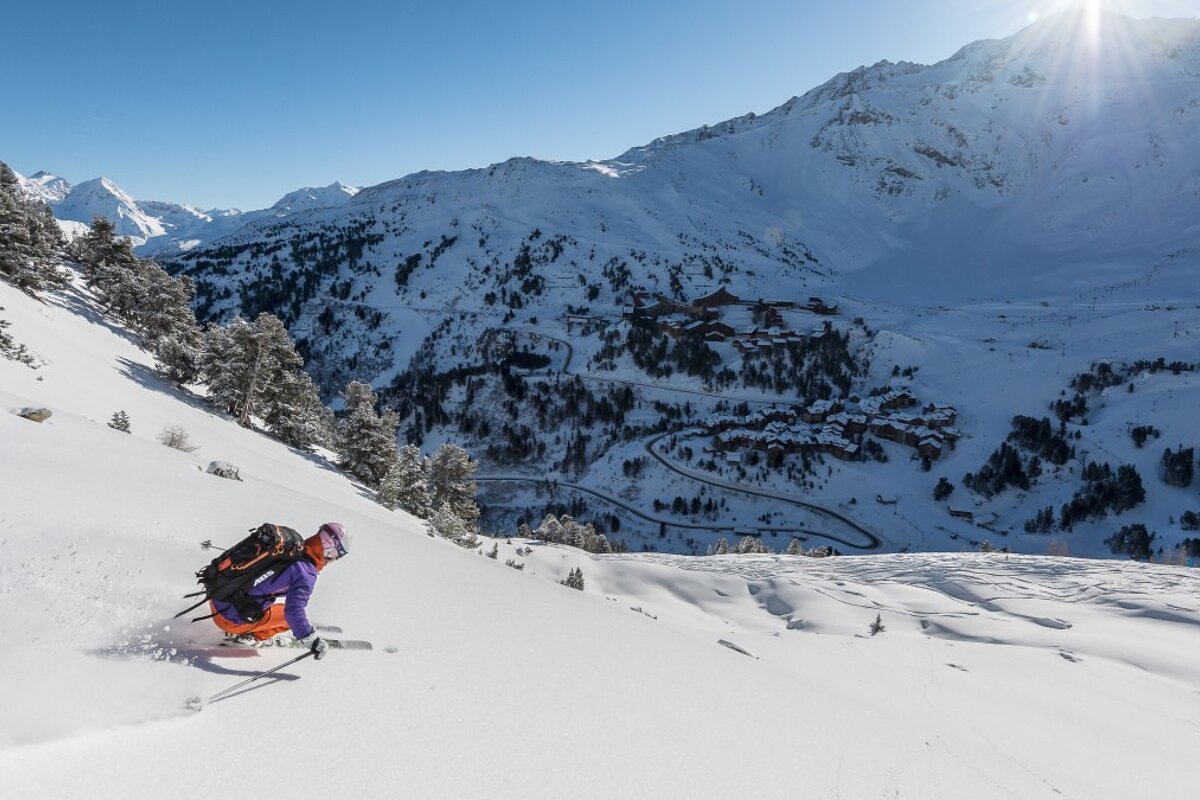
© Lesarcs.com / Pedrotti

© TShu

© ChaletArc
History of Les Arcs
Discover the Les Arcs of yesterday
The resort of Les Arcs is made up of four modern purpose built villages at different levels; Arc 1600, Arc 1800, Arc 1950 and Arc 2000. Each level of Les Arcs is ski-in ski-out, meaning that the vast expanse of the Paradiski is right on your doorstep!
The potential of Les Arcs was first seen in the 1960's by local ski instructor and high mountain guide Robert Blanc (an annual ski race, the Robert Blanc Derby, is held in his honour every February). From his hometown of Bourg Saint Maurice he envisaged a resort that would provide direct access to the ski area, whilst having all the facilities of a village on hand. The concept was unique at the time; most other ski resorts had evolved gradually from small farming communities that had grown to meet the needs of the growing influx of tourists.
Early history
The nearby town of Bourg Saint Maurice was once a stopping point for Romans travelling from Lyon to Turin and was known as Bergintrum. In the following years it thrived as a market town and was conquered many times before being officially acknowledged as a part of France in 1860. For the next 70 years or so life carried on as it always had; farming cattle, making hay, observing local traditions and religious festivals. It was not until the 1920’s and 1930’s that tourists started to arrive, attracted by its proximity to the mountains and its local character. The booming tourist trade in Bourg Saint Maurice was to have a knock-on effect higher up the mountain.
Development through the ages
In 1968 the first resort was opened - Arc 1600. The modern architecture and purpose-built apartment blocks were far removed from the wooden chalets and old family-run hotels that characterised other resorts, but the concept worked and before too long was being imitated in other parts of the Alps. One of the names that is most associated with the design and development of Les Arcs is that of Charlotte Perriand. After 10 years working with Le Corbusier in Paris and then a year studying industrial design in Japan, she moved to Les Arcs and focused on designing the interior of the new apartment blocks. The emphasis was on practical use of a small space without compromising on comfort. Key elements were open plan living areas incorporating a combined kitchen/dining area, large windows and fewer partitions to encourage natural light and balconies to maximize the leisure space. If all this sounds very familiar then no doubt you have stayed in one of the many ski resorts influenced by the practical design concepts of Charlotte Perriand!
Three main concepts determined the development of Les Arcs: (1) respect for the natural beauty of the land; (2) the conservation of existing old mountain chalets; (3) the use of local materials. Although the buildings of Les Arcs are modern in their design they are intended to integrate with the landscape – no building overlooks another or dominates the resort. Although the traditional mountain chalets were carefully preserved, their style was not imitated. The idea behind this was that their integrity was not to be compromised by the creation of a ‘faux’ hamlet full of new-build old-style chalets.
In 1975, Arc 1800 was opened at the Hotel du Golf welcomed its first visitors. Larger than Arc 1600 it comprised four sectors; Le Charvet, Le Chantel, Les Villages and Charmettoger. It remains the largest and the liveliest of the Les Arcs resorts.
Just four years later Arc 2000 opened in conjunction with the Club Med. Up to this point, the various building projects had all followed the design protocols laid out by the first development in Arc 1600. However, as the ski industry grew tourists were becoming more discerning and wanted their resorts to offer not just a vast ski area and miles of pistes but an Alpine character reminiscent of years gone by. 1960’s architecture became passé (in all communities, not just ski resorts) and future projects would bear this in mind.
Les Arcs is known for being at the vanguard of snowboarding; it is one of the few resorts that embraced this new snow sport right from its early days in America. In Europe the late 70’s and early 80’s were all about garish one-pieces (that looked suspiciously like shell suits) and mono-skis. During the winter season of 1981-82 the Winterstick Team came over from the States to spread the word and teach this new sport to local ski instructors. One instructor in particular was fascinated with snowboarding and continued practicing long after the Americans had headed home; his name, Régis Rolland, is now synonymous with snowboarding. Two years later he, along with fellow snowboarder Alain Gamard and French filmmaker Didier Lafond, would make cult snow sports film Apocalypse Snow. The film now looks a little ropey, when compared to some of the extreme mountain sports footage of more recent years, but it was instrumental in getting snowboards in shops and on the slopes. The main crux of the film is a cool snowboarder (Régis Rolland) being chased across the mountains by a gang of dastardly mono-skiers - with everyone decked out in eye-catching winter fashions of the time. In 2008 the film got its long-awaited sequel, Apocalypse Snow – La Retour, once again starring Régis Rolland performing death-defying stunts in a James Bond style sequence of events. Les Arcs has positively encouraged snowboarding ever since and, as well as the wealth of natural terrain, has a number of great snowparks.
Recent history
The millennium brought a new building project at 1,950m. In 2003, Arc 1950 opened and is still being developed today with new residences and facilities. Arc 1950 broke away from the design features of the previous resorts and sought to create an olde-worlde charm through the use of building materials such as local stone and wood and a more traditional look to the buildings and town lay-out. Arc 1950 has the feel of a North American ski resort, not coincidental as it was built by American developers Intrawest. It is considered the luxury resort out of the four; high-end accommodation, a heated outdoor pool and Jacuzzi are some of the reasons why this is one of the more popular Les Arcs resorts.
2003 was also the opening year of the Vanoise Express; the enormous double-decker cable car that links Les Arcs and La Plagne. The opening of the cable car enabled the creation of the Paradiski, an enormous ski area that spans 225km and 132 runs (and that’s just the pisted area!). It can carry 2,000 people per hour and takes just four minutes to travel between its two stations at Plan Peisey (Les Arcs) and Les Coches (La Plagne). In the year of its opening it was the biggest, longest and fastest cable in the world. It has since been beaten by the 3S gondola in Austria, but nevertheless it is still an impressive ride.
Les Arcs is a forward-thinking resort that has constantly been improving and building upon its early success. Recent developments have included major maintenance work on the Vanoise Express (which caused it to be closed for winter 2007/2008), new luxury residences in Arc 2000 that incorporate a bowling alley and offices for ESF and the lift pass company, a water retention lake above Arc 2000 that will supply snow cannons in winter and become a leisure lake in the summer and constant minor improvements to the lift system and ski area.





























